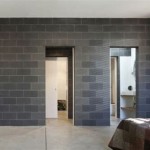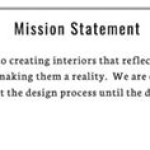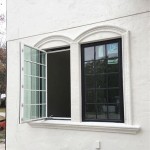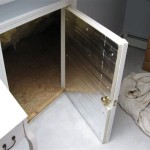The Homewyse Cost of Painting an Interior Wall: A Comprehensive Guide
Painting an interior wall is a common home improvement project that can refresh a living space and increase property value. Understanding the cost involved is crucial for budgeting and planning. The Homewyse Cost Estimator provides a valuable resource for determining the approximate expenses associated with this undertaking. This article details the factors that influence the cost of painting an interior wall, providing a comprehensive guide to help homeowners make informed decisions.
The overall cost of painting an interior wall is determined by a combination of factors, including the size of the wall, the type of paint used, the level of preparation required, and labor costs if the project is outsourced. The Homewyse Cost Estimator considers these variables to generate an estimated cost range, which can serve as a starting point for project budgeting. It is important to remember that these are estimates and actual costs may vary depending on specific project requirements and local market conditions.
Key Factors Influencing the Cost of Painting an Interior Wall
The final cost of painting an interior wall can fluctuate significantly depending on a variety of key factors. Understanding these factors is essential for accurately estimating the total expense and making informed decisions about the project.
1. Wall Size and Surface Area: This is arguably the most significant factor. The larger the wall, the more paint and labor (if applicable) will be required. The surface area is measured in square feet and directly correlates to the amount of paint needed. Complex wall shapes with multiple angles and architectural details will also increase the surface area and, consequently, the cost.
2. Paint Type and Quality: The type and quality of paint selected have a significant impact on the overall cost. Different types of paint, such as latex, acrylic, and oil-based paints, vary in price. Higher quality paints typically offer better coverage, durability, and resistance to fading, mold, and mildew. These paints may require fewer coats, ultimately saving time and potentially money in the long run. Specialized paints, like those with specific finishes (matte, satin, gloss) or those designed for kitchens and bathrooms (moisture-resistant), also command higher prices.
3. Surface Preparation: The condition of the wall's surface plays a crucial role in determining the overall cost. Walls that are clean, smooth, and free from imperfections require less preparation than those with cracks, holes, or peeling paint. Preparation tasks may include cleaning, patching holes and cracks with spackle or joint compound, sanding, and applying primer. Extensive preparation work will increase the cost of the project, both in terms of materials and labor.
4. Labor Costs (If Applicable): If a professional painter is hired, labor costs will represent a substantial portion of the total project expense. Labor rates vary depending on the painter's experience, location, and the complexity of the project. It is advisable to obtain multiple quotes from different painters to compare prices and services offered. It is important to clarify whether the quote includes all necessary preparation work, paint supplies, and cleanup.
Breaking Down the Costs: Materials and Labor
To gain a clearer understanding of the total cost, it is helpful to separate the expenses into two primary categories: materials and labor.
Materials: This category includes the cost of paint, primer, brushes, rollers, roller covers, paint trays, painter's tape, drop cloths, sandpaper, spackle, and any other necessary supplies. The cost of materials can vary significantly depending on the quality and quantity required. High-quality paint typically costs more but offers better coverage and durability. The amount of paint needed depends on the wall's surface area and the number of coats required. It is always prudent to purchase slightly more paint than estimated to account for potential touch-ups or future repairs.
Labor: If hiring a professional painter, labor costs will be a significant portion of the total expense. Labor rates typically range from \$2 to \$6 per square foot of wall space, but this can vary depending on location, experience, and the complexity of the job. Painters usually charge by the hour or by the project. It is important to obtain a detailed quote that outlines the scope of work, including preparation, painting, and cleanup. In addition to the hourly or project rate, some painters may also charge for travel time or other miscellaneous expenses.
By understanding the breakdown of costs, homeowners can better control their spending and make informed decisions about their painting project. For example, they may choose to perform the preparation work themselves to save on labor costs or opt for a less expensive paint to reduce material expenses.
Using the Homewyse Cost Estimator
The Homewyse Cost Estimator provides a valuable tool for estimating the cost of painting an interior wall. To use the estimator effectively, it is important to input accurate information about the project, including the wall's dimensions, the type of paint desired, and the level of preparation required. Here's a step-by-step guide on how to utilize the Homewyse Cost Estimator:
1. Access the Estimator: Navigate to the Homewyse website and locate the cost estimator tool for interior painting. This can usually be found by searching for "Homewyse Interior Painting Cost."
2. Input Wall Dimensions: Enter the wall's height and width in feet. The estimator will automatically calculate the surface area in square feet. If the wall has irregular shapes or multiple angles, break it down into simpler sections and calculate the area of each section separately. Then, add the areas together to get the total surface area.
3. Select Paint Type and Quality: Choose the type of paint you plan to use, such as latex, acrylic, or oil-based. Select the desired paint quality, ranging from economy to premium. The estimator will adjust the paint cost accordingly.
4. Specify Surface Preparation Requirements: Indicate the level of surface preparation needed, such as minimal (light cleaning), moderate (patching minor holes and cracks), or extensive (removing wallpaper, repairing significant damage). The estimator will factor in the cost of materials and labor associated with each level of preparation.
5. Choose Labor Options: Select whether you will be hiring a professional painter or performing the work yourself. If hiring a painter, the estimator will factor in labor costs based on local market rates. If performing the work yourself, the estimator will only consider the cost of materials.
6. Review and Adjust: Review the estimated cost range generated by the estimator. Adjust the input parameters as needed to refine the estimate based on specific project requirements and preferences. For example, if you plan to use a premium-quality paint or require extensive surface preparation, adjust the corresponding values to reflect these factors.
7. Obtain Multiple Quotes: Use the estimated cost range as a baseline for obtaining quotes from multiple professional painters. Compare the quotes to ensure they are competitive and that they include all necessary services and materials. It is advisable to ask for a detailed breakdown of the quote, including the cost of materials, labor, and any other applicable fees.
By following these steps, homeowners can effectively use the Homewyse Cost Estimator to gain a better understanding of the costs associated with painting an interior wall. This knowledge will empower them to budget accurately, negotiate effectively with contractors, and make informed decisions about their painting project.
Additional Cost Considerations
While the factors discussed above are the primary drivers of cost, there are several other considerations that can influence the final expense of painting an interior wall. Overlooking these factors can lead to unexpected costs and budget overruns.
1. Moving and Protecting Furniture: Before painting, it is necessary to move furniture away from the walls and cover it with drop cloths or plastic sheeting to protect it from paint splatters. Moving heavy furniture can be time-consuming and may require assistance. If you hire a professional painter, they will typically include this task in their service, but it is important to confirm this upfront. Failure to properly protect furniture can result in damage and additional expenses.
2. Removing and Reinstalling Fixtures: Removing light fixtures, electrical outlets, and switch plates can make painting easier and result in a cleaner finish. However, this can also be time-consuming and may require the assistance of an electrician, especially if dealing with electrical wiring. If you choose to remove these fixtures yourself, be sure to turn off the power to the circuit breaker before proceeding. Carefully reinstall the fixtures after the paint has dried.
3. Cleanup: After the painting is complete, it is necessary to clean up the area, including removing drop cloths, cleaning brushes and rollers, and disposing of paint cans and other waste materials. Cleanup can be a time-consuming task, especially if the painting project involved a large area. If hiring a professional painter, they will typically include cleanup in their service. However, it is important to confirm this upfront to avoid any surprises.
4. Accessibility: Walls that are difficult to access, such as those located in high ceilings or confined spaces, may require additional equipment, such as ladders or scaffolding. This can increase the cost of the project, both in terms of rental fees and labor costs. Painters may charge a premium for working in difficult-to-reach areas.
5. Permits: In some jurisdictions, a permit may be required for interior painting projects, especially if the project involves structural changes or electrical work. Check with your local building department to determine whether a permit is required. Failure to obtain a permit can result in fines and delays.
By considering these additional factors, homeowners can develop a more comprehensive understanding of the total cost of painting an interior wall and avoid unexpected expenses.
Tips for Saving Money on Painting Projects
Painting an interior wall can be a cost-effective way to refresh a living space, but it is important to be mindful of expenses. There are several strategies that homeowners can employ to save money on their painting projects.
1. Do-It-Yourself (DIY) Approach: Performing the painting work yourself can save significantly on labor costs. However, it is important to have the necessary skills and tools to complete the project successfully. Start with a small, less visible area to practice and gain experience before tackling larger, more prominent walls. Watch online tutorials and read articles to learn proper painting techniques.
2. Shop Around for Paint: Compare prices from different retailers and brands to find the best deals on paint. Look for sales, discounts, and coupons. Consider purchasing paint in bulk to save money if you have a large area to cover or plan to use the same color in multiple rooms. However, be aware that mixing different batches of paint can result in slight color variations.
3. Prepare the Surface Yourself: Performing the surface preparation work yourself can save significantly on labor costs. This includes cleaning the walls, patching holes and cracks, and sanding rough surfaces. Be sure to use the appropriate tools and materials for each task. Thorough surface preparation is essential for achieving a smooth and durable paint finish.
4. Use Primer: Applying a coat of primer before painting can improve paint adhesion, coverage, and durability. Primer also helps to seal porous surfaces and prevent stains from bleeding through. Using primer can reduce the number of coats of paint required, saving money on materials.
5. Protect Furniture and Flooring: Carefully cover furniture and flooring with drop cloths or plastic sheeting to prevent paint splatters and avoid damage. This can save money on cleaning and repair costs. Use painter's tape to protect trim, windows, and other surfaces from paint. Remove the tape immediately after painting to prevent it from peeling off the paint.
By following these tips, homeowners can reduce the cost of their painting projects without sacrificing quality or aesthetics.

Cost To Paint Home 2025 Calculator Customizable

Cost To Paint Interior Walls Homewyse

How Much Does It Cost To Paint The Interior Of House

Homewyse Lists User Guide

Interior Painting Costs Insights From Quality Preferred
The Cost To Paint Exterior Of A House Touch Color

How Much Does It Cost To Paint The Interior Of House

Cost To Paint Interior Walls Homewyse

Cost To Paint Interior Walls Homewyse

How To Painting Jobs Fieldpulse
Related Posts








